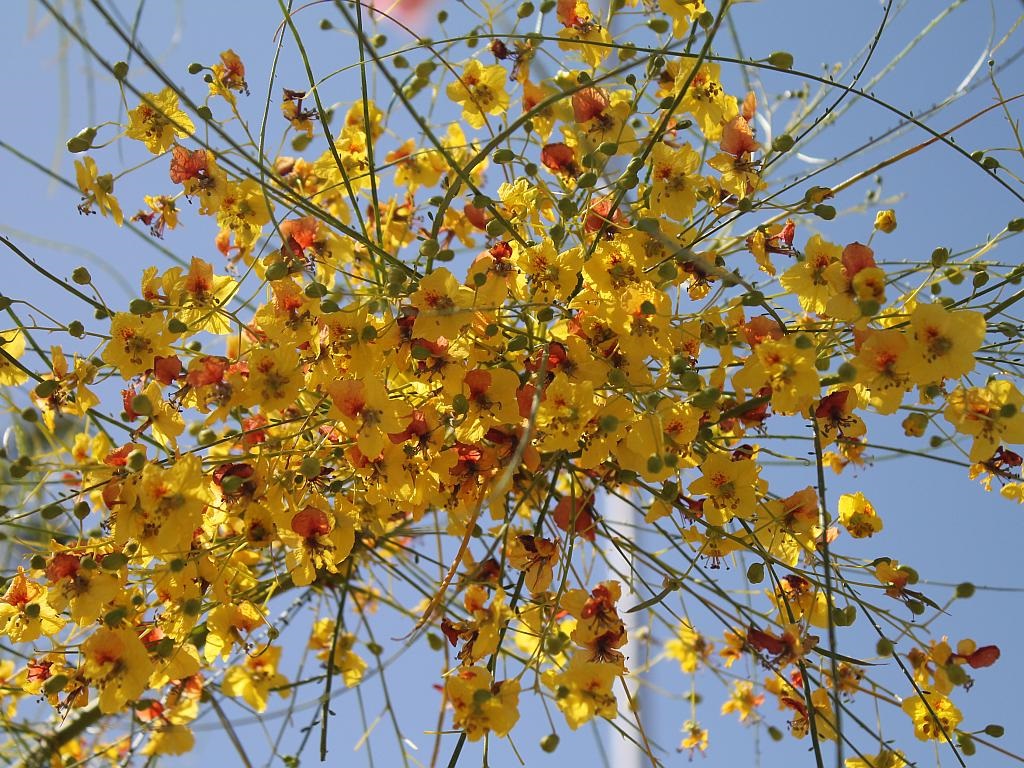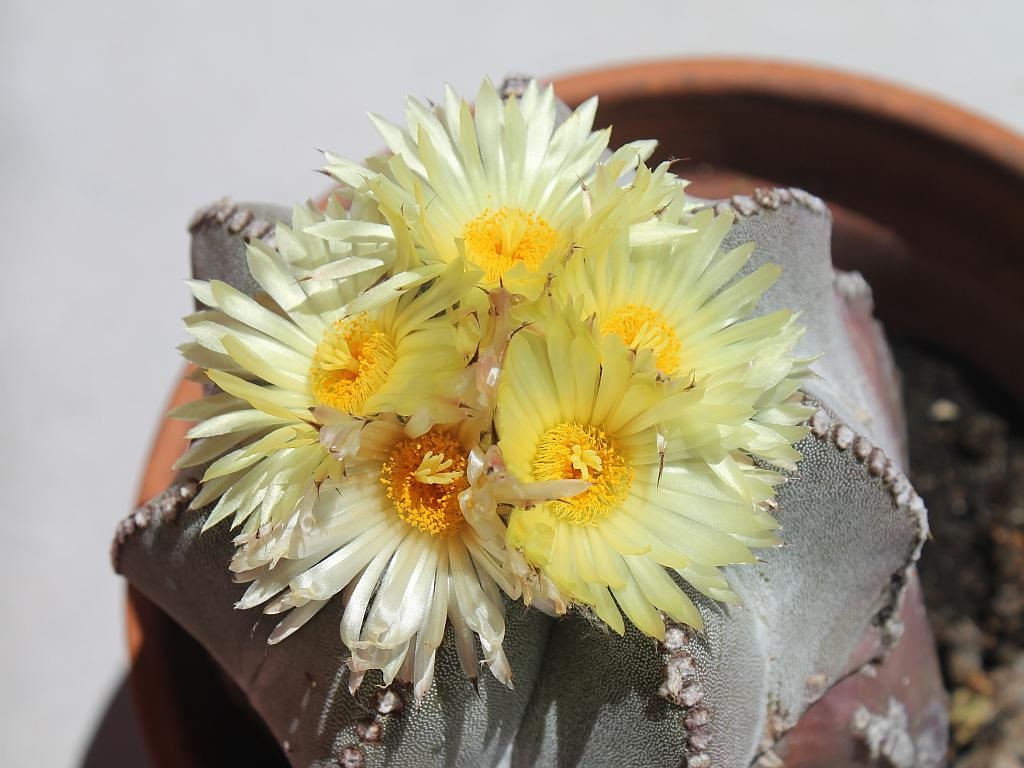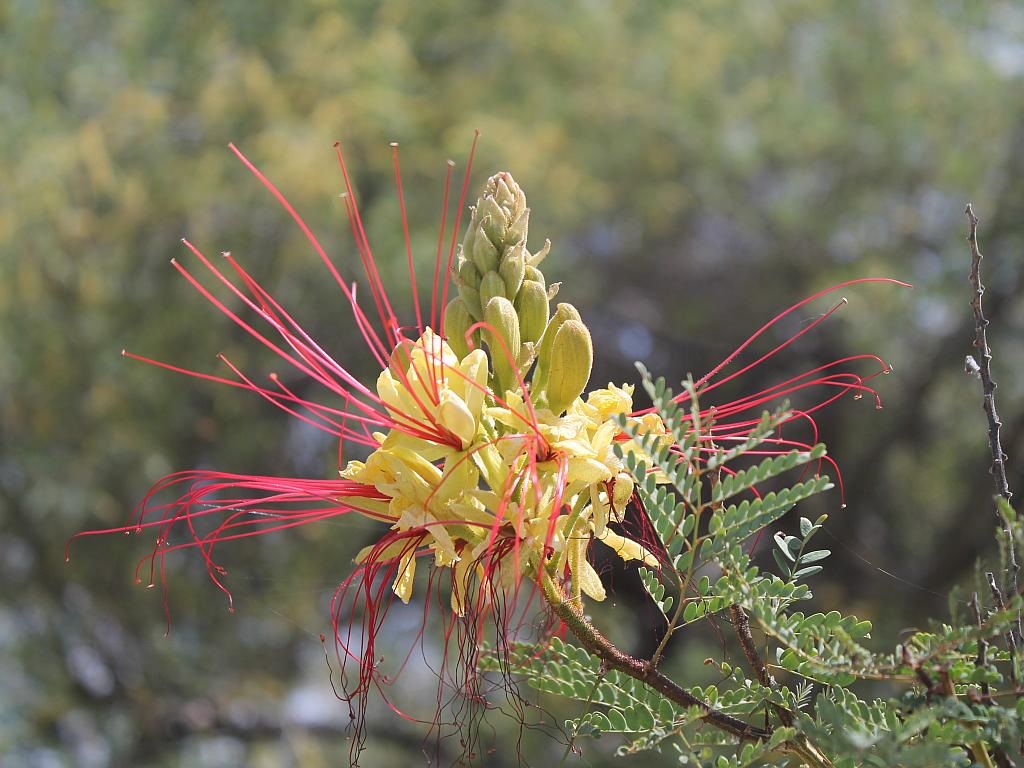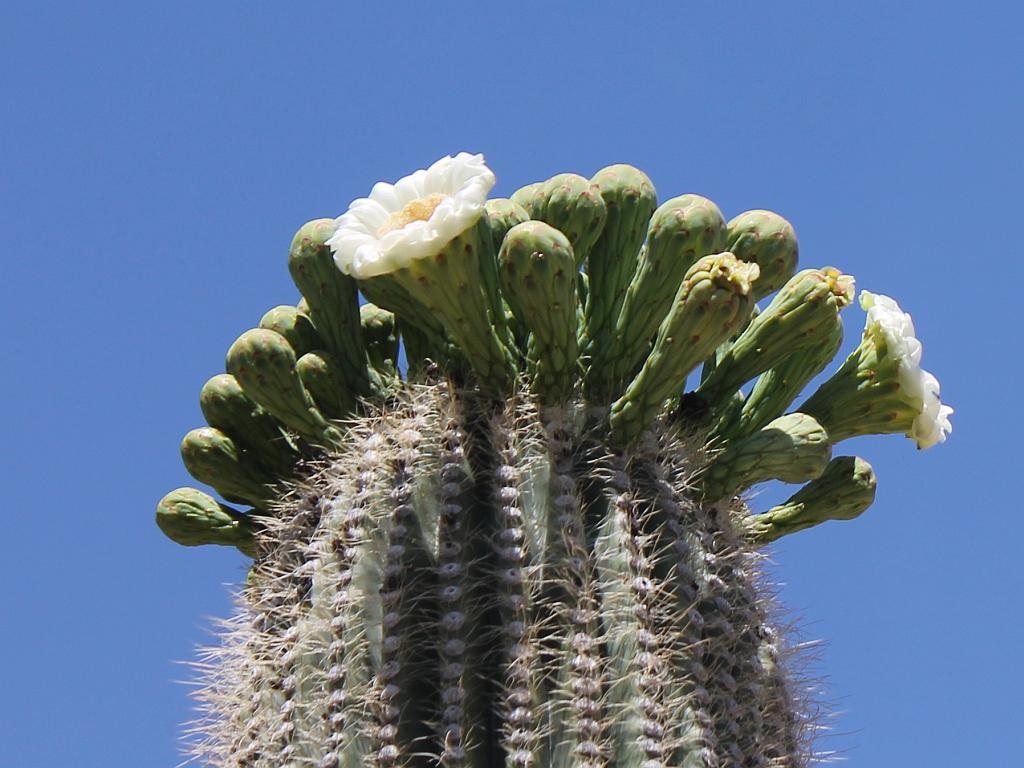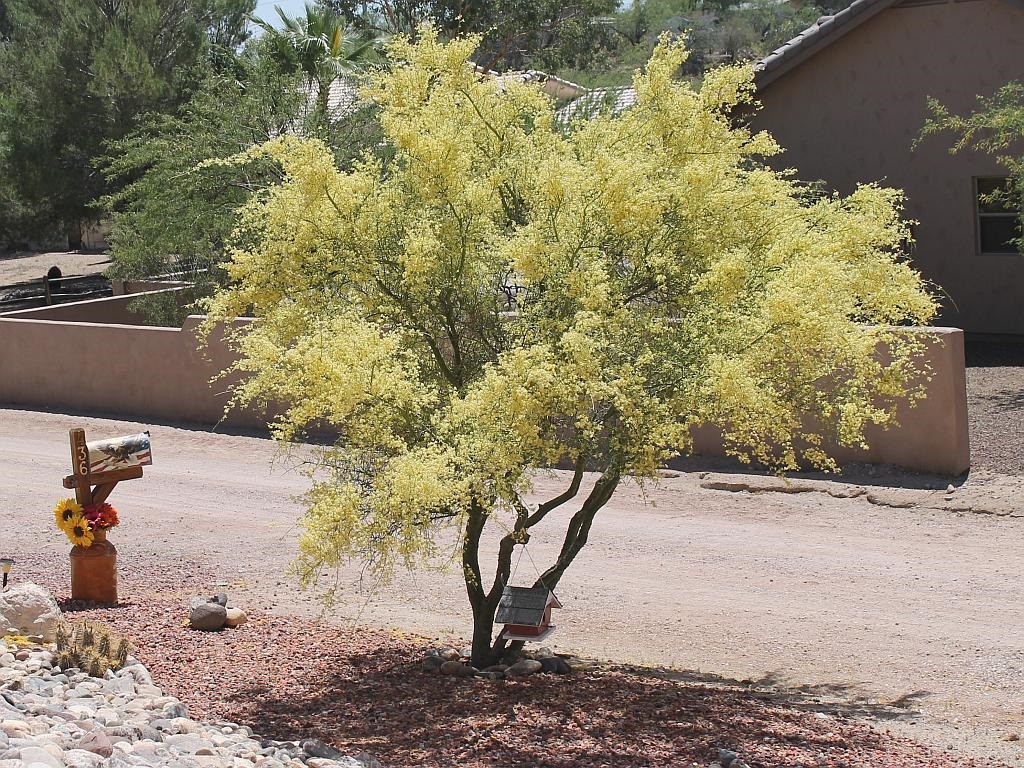
This is the first year since we have been here that the little paloverde tree on the road out front has had flowers growing in such profusion. Damsel pointed out that this tree’s flowers are slightly different than the ones she saw at the dog park. The latter are larger with a red spot in the center while these flowers are small with no spot.
I did some internet research on the topic and found there are actually four species and one hybrid that share the paloverde name. The one at the dog park is, apparently, a blue paloverde (Parkinsonia florida). The one out front (and elsewhere on our lot) is a foothill paloverde (Parkinsonia microphylla). Wikipedia describes the foothill paloverde as follows:
Parkinsonia microphylla, the yellow paloverde or foothill paloverde; syn. Cercidium microphyllum, is a species of palo verde.
Parkinsonia microphylla is a bristling, upright-branching tree. The species is slow-growing, sometimes living for several hundred years. It typically grows to heights of around 5 meters (16 ft), although rarely it can reach 6–7 meters (20–23 ft) tall.
The leaves are yellowish green, and during extensively dry and hot periods the tree will shed them. It has the characteristic of performing photosynthesis in its bark (hence the green color), and this is what allows it to survive leafless in hotter periods.
The flowers are found on the end of a branch, small, pale yellow and occur in late spring. The tree may not flower every year, depending on the amount rainfall. If there is enough rainfall, seeds will also appear in 4–8 cm long, soft pods which dip in between each seed. They ripen in July, and stick to the branches. Rodents will often carry and store the seeds underground, where some of them will germinate after a rainy season.
Click on Damsel’s image above to enlarge.

